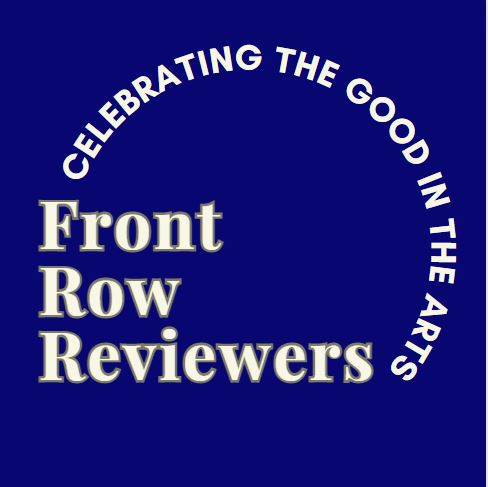By Brian Gray
Capping off its 2018-2019 season, Ballet West in Salt Lake City presents the Choreographic Festival, a dynamic and comprehensive production featuring dance compositions by a variety of choreographers. The festival has become somewhat of a tradition at Ballet West, beginning twelve years ago as Innovations, the progeny of Adam Sklute when he undertook the position of artistic director of the company. The purpose of the production, as Sklute writes in the director’s notes, was to “give our company dancers an opportunity to create and to present renowned and emerging, national and international choreographers.” The result is an enthralling event of myriad styles.
To a non-dancer or non-ballet-enthusiast, the Choreographic Festival is comparable to a series of short films or a book of short stories. The festival features five short works with two intermissions over the course of two hours and fifteen minutes. The works are short ballets by local Ballet West principal artists and soloists, world-renowned choreographer Edwaard Liang, and a performance by Scottish Ballet, the first international company featured at the festival.
The first ballet is Sibilo, performed by Scottish Ballet and choreographed by Sophie Laplane. This ballet is witty, playful, flirtatious, and, at times, morose. Throughout the piece, the company of eight dancers come together through intense music and then break apart leaving two or three dancers to perform. Sometimes the ambiance is light, as the dancers enact a ritual of flirtation or mourning as their clothes come off and on. At times, the movements become awkward and gangly, almost deriding the pretentions of ballet, before coming back together.

The second ballet, But a Dream by Emily Adams, continues the flirtatious vibe, though with a touch more gravity. The dance covers a fairly large portion of the stage, often with niches of movement beckoning the eye of the viewer to jump around from place to place. This effect enhances the audience experience, ensuring no two viewings are the same. The choreographer describes this piece as surrealist, and, indeed, it is reminiscent of Dali’s paintings, with multiple areas of interest, displays of curiosity, and hints of tortured longing that play out through a series of short vignettes.
The third piece, Hidden Voices by Katlyn Addison, opens with sharp, dark red lighting (designed by James K. Larsen) and three dancers moving long and gracefully to a vocal hymnal rendition of Going Home . This leads into a contrasting lively piece of classical music, Quartet No. 12 by the European composer Antonin Dvořák, and a troupe of dancers moving in unison. The selection of the music is intriguing, and in an interview, choreographer Katlyn Addison talks about her fascination with Dvořák and how his compositions were inspired by American spiritual music of the time. There are quite a few fascinating elements at play in this piece, such as the appropriation of spiritual music by Dvořák, and this is reflected in the choreography and the lighting, contributing to contemporary discussions around these issues.

The fourth piece, disquiet by Trevor Naumann, is the most contrasting out of all of the ballets in the festival. This piece begins with a troupe of dancers on the ground moving gradually up in a pulsating mass until they explode with sporadic leaps and spins. The audience really feels a sense of anguish and aggravation in throughout the piece as the movements transition from frenetic to mellifluous then back again, until finally ending with the troupe sinking back into the ground. The jolting musical composition by Boaz Roberts and textured lighting by Michael Mazzola further emphasize the angst of the ballet.
The fifth and final piece is the tour de force of the evening. Choreographed by Edwaard Liang, Constant Light utilizes over a dozen dancers. The piece opens on a back-lit set revealing the silhouettes of the dancers before gradually rising to full light with a backdrop gradient lighting of vibrant red (lighting by Jack Mehler). The dancers themselves wear costumes with a similar gradient (by David Huevel). The ballet spans the stage, at times keeping the dancers in a straight line and then breaking off into various synchronized duets throughout. There are several incredible feats of balance in the lifts, the results of which are visually stunning.

Given the artistry and sophistication of each piece of the Choreographic Festival, I am saddened that I can only write one review in an attempt to capture all of them. This is certainly a production unlike any you will see throughout the regular season at Ballet West, as audiences are exposed to a vast array of new, contemporary, and borderline avant-garde ballet compositions. While I am afraid I don’t attend as much ballet performance as I should, I am certainly thrilled that I was able to attend this one, and I will be certain to see more.
This run of this production is incredibly short, with only a matinee and evening performance left. Hurry and get your tickets!
Ballet West presents Choreographic Festival by various choreographers
Rose Wagner Center for the Performing Arts, 138 West Broadway, Salt Lake City, UT 84101
May 9-11, 7:30 PM, 2:00 PM Saturday Matinee.
Tickets: $49.50
801-869-6920

0 Comments